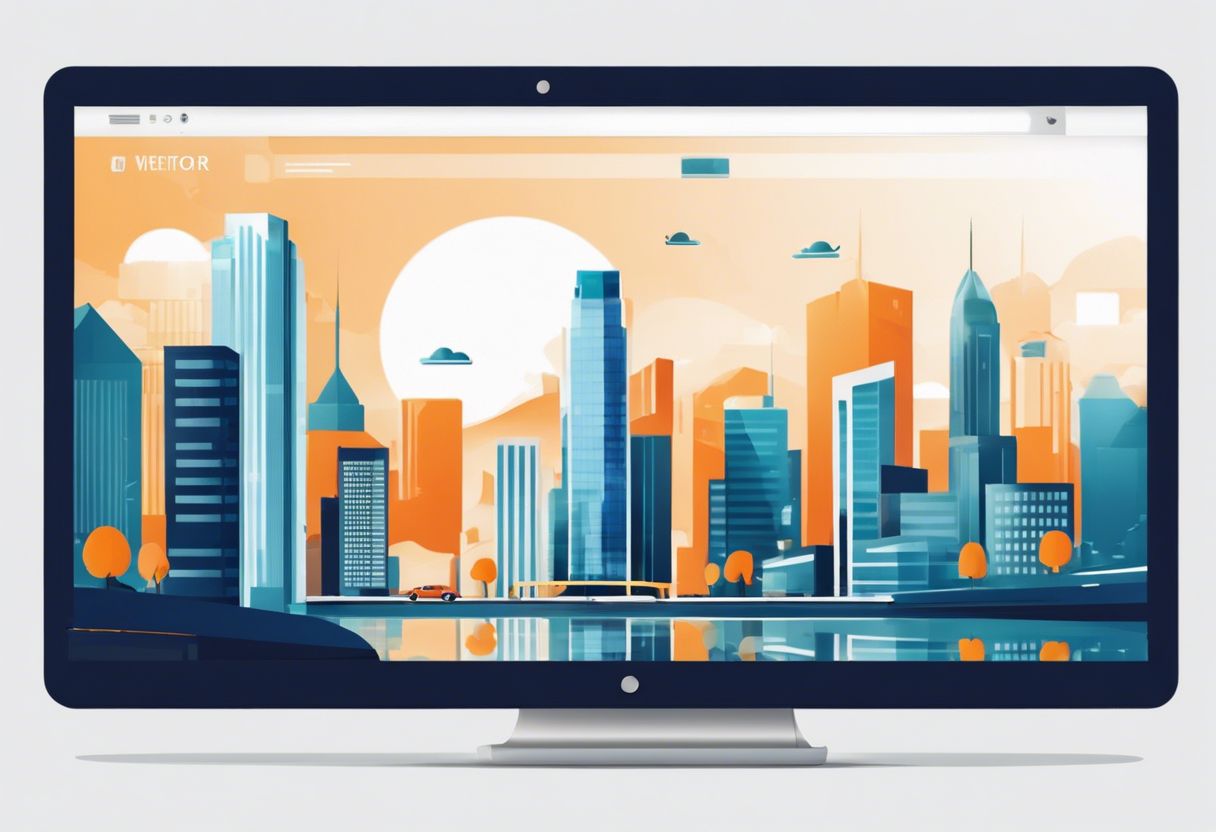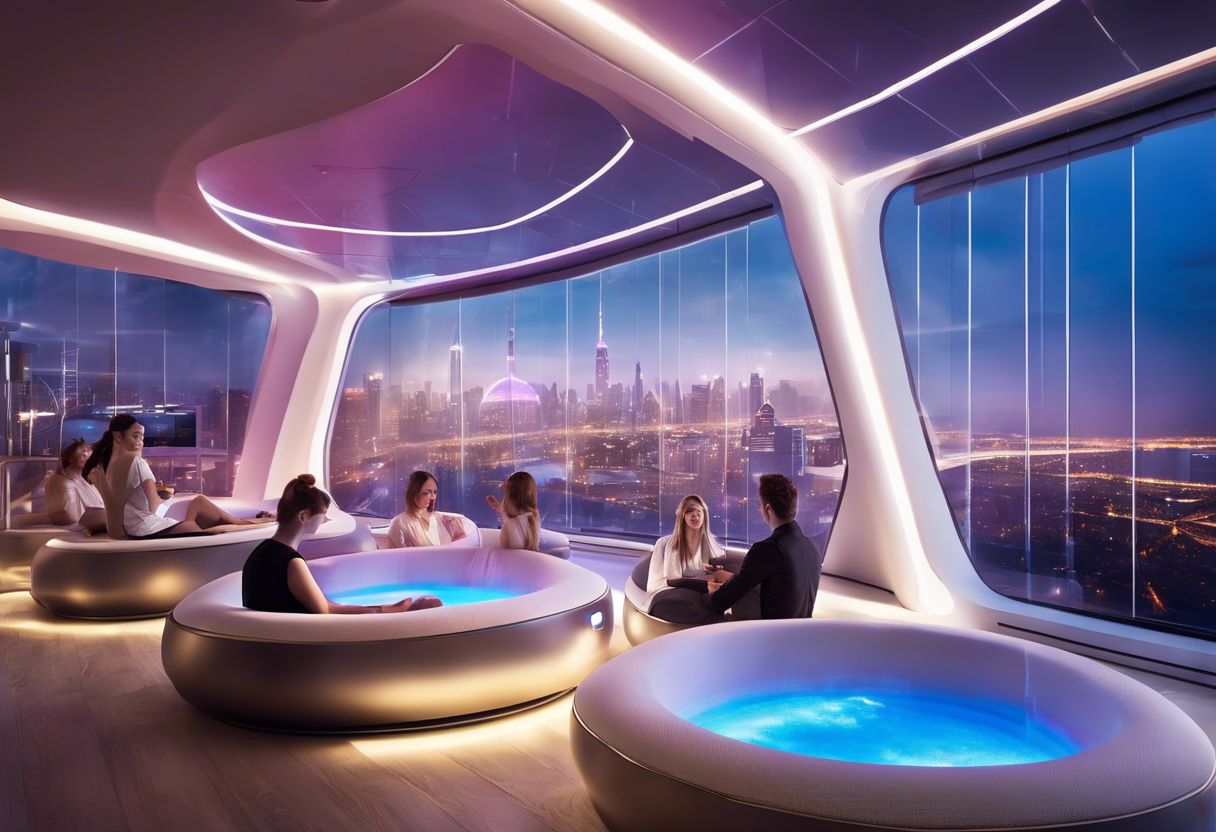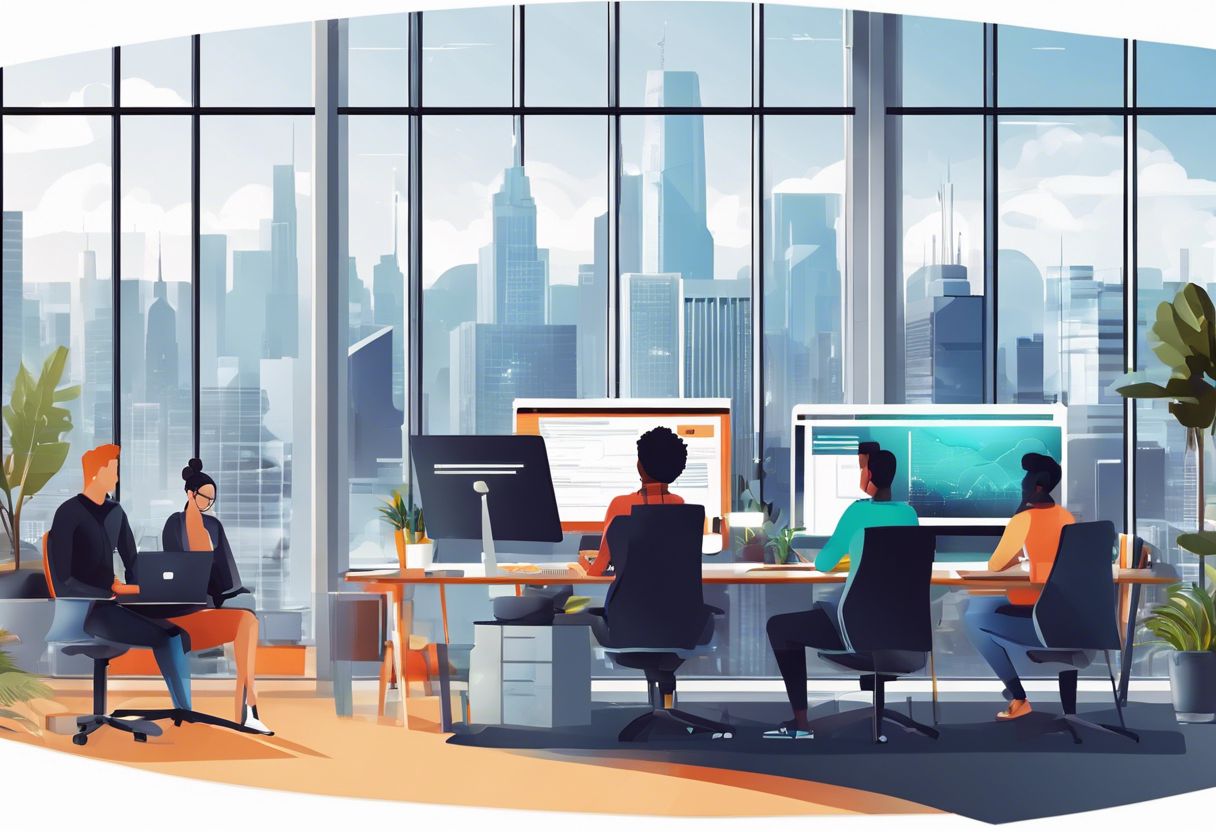SPA Development Unveiled: Creating Dynamic Web Experiences

Web pages have changed a lot, and now we have something cool called Single-page Applications (SPAs). SPAs make websites work better and faster by not reloading new pages all the time.
Instead, they update what’s on screen using data from the internet. This is great for businesses because their websites can do more without making people wait.
SPAs are smart and can even work when you’re offline since they remember information they got before. But building these apps can be tricky, especially when it comes to search engines finding them online.
Yet, there are ways to fix this like using special tech that helps SPAs play nice with search engines.
We also have tools like React and Next.js that help us make SPAs easier to handle and keep working well. And guess what? Young people love how these apps feel on their devices! We’ve seen many stories where SPAs helped industries grow by making things modern.
The spa world is also getting into tech, putting new digital features in personal care services which customers find super handy. Let’s take a closer look at why SPAs are shaping the future of fun web experiences for everyone! Keep reading as we dive deeper into the exciting SPA journey.
Decoding Single-Page Applications (SPAs)
-151554139.jpg)
Single-Page Applications (SPAs) are a modern approach to web development, characterized by their unique structure and functionality. They differ from traditional multipage websites in how they load content and provide a seamless user experience.
Let’s delve into the mechanics of SPAs and explore their key features.
Defining SPAs and Their Unique Structure

We see single-page applications, or SPAs, change web experiences. These apps keep users on one webpage. Instead of loading whole new pages to show content, they only update parts that need changing.
This happens because of clever code and a special setup.
Think about how stepping into a room and having everything you need appear around you sounds—that’s what SPAs do for websites. They pull in data as needed without taking you from page to page.
It feels smooth, like flipping through pages in a notebook without losing your spot.
SPAs bundle all the basic elements at the start. This means faster interactions later since most resources are already loaded the first time someone visits your site. We use technologies like AJAX for this magic trick—getting new info silently in the background so people using your site won’t have to wait.
Our goal is always clear: make things speedy and keep folks happy while they’re online with us!
The Mechanics of SPAs: How They Differ from Traditional Websites

Understanding SPAs and their unique structure leads us to explore how they work differently from traditional websites. SPAs load only once, bringing everything to the user’s device in one powerful move.
From there, they update content dynamically without needing to refresh the whole page every time a user clicks or interacts with the app. This is a big change from older sites that reload pages completely, which takes more time and can frustrate users.
With an SPA, we see immediate feedback when we do something on the page; it feels smooth like using a native app on a phone or tablet. This happens because SPAs request data as small chunks instead of asking for full page data all at once.
It means users get what they need faster and developers can manage updates more easily.
We save time and money since maintaining an SPA often involves less effort than taking care of old-style web applications where you have lots of pages to look after. Every business owner likes saving resources, so understanding these mechanics can help choose the best way forward for your online presence.
Advantages of Single-Page Applications

Enhanced User Experience Through Seamless Interactions and Boosted Performance with Reduced Load Times are just a few of the advantages that Single-Page Applications (SPAs) offer. The impact of SPAs on scalability and maintenance is also noteworthy, making them an attractive option for businesses seeking dynamic web experiences.
Enhanced User Experience Through Seamless Interactions

We know how important it is for your customers to move around your website without any hiccups. With single-page applications, they get exactly that—a smooth sailing journey from start to finish.
They can click on things and see new content pop up right away without the whole page reloading. This keeps users happy because everything feels quick and easy.
Our job is to make sure visitors stay engaged with your site, and SPAs are great at this. They load dynamic content fast, which means less waiting around for pages to refresh. Users get a responsive design that works well on phones, tablets, or computers.
Everything looks good and works even better! Keep them interested with seamless navigation; let them enjoy browsing through what you offer without any lag time getting in the way of their experience.
Boosted Performance with Reduced Load Times
 Improved performance is a key advantage of Single-Page Applications (SPAs). With SPAs, the page loads once and then updates dynamically without needing to reload the entire page for each interaction.
Improved performance is a key advantage of Single-Page Applications (SPAs). With SPAs, the page loads once and then updates dynamically without needing to reload the entire page for each interaction.
This results in reduced loading times, faster page load, and improved speed. Moreover, SPAs allow for seamless transitions between pagesand ensure responsive design, enhancing user experience by providing efficient application performance with dynamic content.
One significant impact of SPAs is their ability to deliver dynamic updates without refreshing the entire page. This ensures that users can interact with the content seamlessly, leading to better user engagement and satisfaction.
The Impact of SPAs on Scalability and Maintenance
 Boosted performance and reduced load times are critical benefits of Single-Page Applications (SPAs). However, another significant impact of SPAs is their ability to enhance scalability and simplify maintenance.
Boosted performance and reduced load times are critical benefits of Single-Page Applications (SPAs). However, another significant impact of SPAs is their ability to enhance scalability and simplify maintenance.
SPAs process data more efficiently than traditional websites, making them cost-effective for businesses. The streamlined nature of SPAs allows for better traffic management and can handle increased loads without sacrificing performance or user experience.
Maintenance becomes easier with SPAs as they require less upkeep compared to traditional multi-page applications. With reduced complexity in the codebase, updates and modifications can be implemented swiftly without disrupting the entire application.
Designing SPAs for the Newest Audience: Gen Z Appeal

When it comes to designing SPAs for the newest audience, we cannot overlook the influence of Generation Z. This tech-savvy generation has distinct preferences and habits that significantly impact their spa experiences.
Understanding these preferences is crucial in tailoring SPA design to appeal to Gen Z. Spas should embrace digitalization to create an immersive and seamless experience that resonates with this audience.
Integrating technology into the spa experience can attract younger consumers who are accustomed to convenient digital solutions.
Focusing on consumer study findings reveals that Generation Z values personalization, sustainability, and convenience in their choices. In response, spa owners can incorporate personalized digital experiences and sustainable practices into their offerings.
Additionally, leveraging social media platforms and influencer collaborations can be influential in reaching out to this digitally connected audience effectively.
Embracing technological advancements not only enhances the appeal of SPAs but also aligns with the evolving consumer preferences of Generation Z. These strategies position spas as dynamic and appealing spaces for a new wave of consumers while adapting to modern trends.
5.Challenges and Considerations in SPA Development
Challenges and Considerations in SPA Development

Navigating the complexities of SPA frameworks and libraries can be daunting, but understanding these challenges is crucial for successful implementation. Click to learn how to address SEO concerns and optimize your SPA for a seamless user experience.
Addressing SEO Concerns in SPAs

When it comes to SEO in SPAs, we need to ensure that our JavaScript code runs quickly and smoothly. This is crucial for search engines to properly index and rank our single-page applications.
Addressing the challenge of discoverability, URLs, and indexing is vital for making our web apps visible in search results. Server-side rendering (SSR) can be a game-changer, improving both speed and SEO-friendliness while addressing the issue of incomplete indexing commonly faced by SPAs reliant on JavaScript for content loading.
It’s important to note that while SEO may seem less critical in SPA development due to their dynamic nature, it remains significant. Thus, overcoming these challenges through optimized JavaScript execution and strategic use of server-side rendering will not only make your app fast but also more search engine friendly, ensuring better visibility and accessibility for potential users searching online.
Navigating the Complexities of SPA Frameworks and Libraries

In the fast-paced world of single-page application development, navigating the complexities of SPA frameworks and libraries is crucial for business owners. Selecting the right frontend framework and JavaScript library can significantly impact user interface development, web application architecture, and overall client-side rendering.
With an emphasis on modular web development, businesses benefit from enhanced user experience, scalable web applications, and efficient web performance. Leveraging these tools with integrated solutions like React, Next.js, and Qwik addresses the challenges in SPA development while ensuring improved performance.
When it comes to single-page applications, understanding the intricacies of SPA frameworks and libraries empowers business owners to make informed decisions about their web presence.
Real-Life Success Stories: SPAs in Action

Explore how companies like Airbnb, Netflix, and Facebook have successfully leveraged SPAs to deliver seamless user experiences and improve performance. Ready to be inspired by their success? Let’s dive in!
Case Studies of Effective SPA Implementations in Various Industries

We have studied several case studies that showcase successful implementation of SPAs in various industries. Let’s take a look at these real-life examples to understand the impact and potential of SPAs in different business sectors:
- Wellness Retreats: A luxury wellness retreat utilized SPA development to create personalized treatment plans for guests, enhancing their experience and attracting new clientele seeking holistic healing.
- Health Tourism: A health tourism company leveraged SPA frameworks to design an interactive platform that offers seamless booking experiences, catering to the growing trend of health and wellness travel.
- Spa Management Strategies: An upscale spa management company integrated SPAs to streamline operations, manage appointments, and enhance the overall customer journey, resulting in improved efficiency and customer satisfaction.
- Health and Wellness Market Trends: In response to evolving wellness trends, a popular alternative medicine clinic developed an SPA to provide online resources, personalized guidance, and virtual consultations, aligning with the changing consumer demands.
- Mind-Body Connection: A self-care advocacy group deployed SPAs to deliver educational content focusing on the mind-body connection, effectively engaging their audience and fostering community involvement.
- Technology Integration in Alternative Medicine: A progressive clinic specializing in alternative medicine embraced SPA development to offer digital platforms for accessing personalized health information and interactive tools for self-care practices.
Conclusion: The Future of Dynamic Web Experiences with SPAs

In conclusion, single-page applications are revolutionizing web development. They deliver dynamic and captivating user experiences while enhancing performance. Embracing SPAs can transform the way businesses interact with their online audience.
It’s an exciting journey to explore and implement SPAs for modern, engaging web experiences, bringing innovation and enhanced usability to the forefront of digital interactions.
Discover how to tailor your single-page application to captivate the emerging Gen Z market by exploring our in-depth guide on designing websites for the newest audience.


